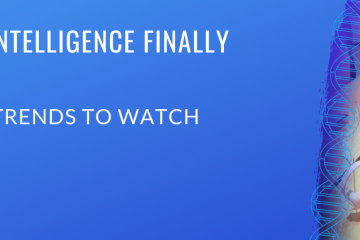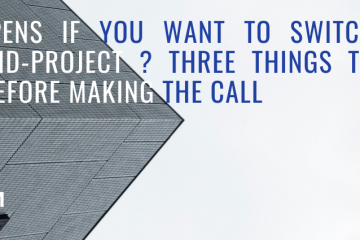Agile, agile, agile. When it comes to software or product development, the word “agile” is everywhere. It’s one of those hot buzz words it seems everyone’s saying and everyone wants to hear.
But what does agile development really mean? And are agile development methods always the best? It’s worth taking a step back now and then to revisit some of the core project management concepts that underlie our work.
After all, when it comes to a major development effort — whether it’s an innovative new mobile app, a software package, or other tech project— the approach you choose can play a huge role in your project’s success. It’s important to go with the method that best fits the unique needs of your project.
Here are a few key differences between agile development and its older, more traditional predecessor, the waterfall method. As you’ll see below, in today’s innovative tech environment, 9 times out of 10, agile development will be your go-to. But waterfall has its place sometimes, too.
What Is Waterfall Development?
Waterfall development is also widely known as Traditional Project Management (or “TPM”) because, for decades, it was the traditional model for project management. The word “waterfall” describes the nature of the approach: tasks flow sequentially, one after another, like cascading water flowing down into a river. Tasks are executed one after the next in execution of a strict plan that is set early in the process.
Waterfall projects are typically organized into six distinct sequential phases: initiation, planning and design, execution, testing, monitoring and completion.
Ok, Then, What’s Agile Development?
Under agile development, we turn some of the most traditional project management methods onto their heads. Where waterfall projects are rigid and linear, agile projects are flexible and iterative. There are a few ways to go about this. In fact, the term “agile” represents a framework for project management methods that includes many offshoots and variations, including scrum, kanban and more.
In short, developing an agile project involves breaking up the project into several different, smaller projects that have their own sets of priorities and phases. Under waterfall projects, requirements are locked down early in the planning and design phase, but under agile projects, requirements constantly evolve and adapt to the customer’s, product’s, and market’s changing needs.
Agile development methods also encourage customers to provide feedback throughout the process to ensure the development works for them. As a result, customer satisfaction rates are often much higher than for traditional projects, according to CIO magazine.
As some of the earliest proponents of agile development put it in the Agile Manifesto back in 2001, “Our highest priority is to satisfy the customer through early and continuous delivery of valuable software. [We] welcome changing requirements, even late in development. Agile processes harness change for the customer’s competitive advantage.”
Got It! So, Which Is Better: Waterfall or Agile?
If you’re trying to determine which method is best for your particular project, the short answer is, it depends. But more often than not, an agile approach will be recommended.
Why? Well, agile development has become incredibly in-demand because it gets results. Researchers from the Standish Group in 2015 reported that agile projects have a significantly higher success rate than waterfall projects.
There’s a lot of reasons why the agile development method works so well. Here are just a few of its biggest advantages:
- Agile methodologies let you identify problems early and quickly resolve them. Unlike in a waterfall approach, where you’re relatively “locked in” to your project plan from the beginning, an agile project emphasizes finding issues with your product development quickly, and then adapting to fix them as needed. You don’t need to wait until a late-in-the-game testing phase to start finding problems. The earlier you identify a problem, the easier it is to resolve it. Agile methods provide you the flexibility to take the issues offline before they become long-term problems.
- Agile development projects result in higher-quality products that actually meet clients’ needs. Because agile projects involve frequent collaboration and communication with the client, as well as the flexibility to adapt or change plans based on feedback received, the end product is one everyone is more likely to be happy about. Feedback happens often and it happens faster than it would in a traditional waterfall project. As a Forbes Technology Council member said, under agile development, “Customers are happy because they have a higher probability of getting what they want.”
- Agile projects deliver results sooner. The iterative approach central to agile development’s methodology means that certain deliverables or stages of a project can be released on a rolling basis. The most useful and/or important features, for example, can be prioritized and provided before the rest through sprints or scrums. If timelines are short — and in today’s competitive innovative tech environment, timelines are always short — agile development is often the best way to get a useful and user-friendly product to market faster.
There are plenty of other benefits to agile approaches too. Many credit agile methodologies with improved maintenance, more engaged development teams, more adaptability to unexpected industry or market changes, greater collaboration, and better code in general.
What Are the Potential Drawbacks to Agile?
All that sounds great, right? Faster results, a better product, a satisfied user, and a happy client — what’s not to love? It’s no wonder that as many as 70 percent of organizations use agile approaches, according to a 2017 global project management survey.
However, it’s worth noting that there can be some disadvantages to agile development methods, too. And sometimes, depending on the nature of your project and its expectations, the traditional waterfall approach may make more sense.
Sometimes, the inherent flexibility that is central to the agile approach is just not needed and doesn’t serve a particular project. For example, waterfall methods make more sense for smaller-scale and simpler projects that are not likely to evolve. Because the waterfall approach is more rigid and straightforward, it can also serve well in a simple project with a fixed and crystal-clear scope and inflexible time and budget constraints.
Also, agile methods do often feature a lot of feedback and communication with the client throughout the development process. That’s usually a pro, but it can also be a con. In cases where such communication isn’t an option for whatever reason, a waterfall approach — where requirements are set and agreed-upon early on in the process — may be a better fit.
Further, agile development methods are only as good as the team that works on them. Project or delivery managers need to be trained, skilled, and experienced in handling the complexity of an agile project and juggling all the various moving and changing parts. The flexibility of agile methods is powerful, but this flexibility must also be harnessed in a productive way to achieve the best and fastest end results.
Finally, the developers and engineers on the team need to be cross-functional and innovative team players who thrive in a flexible, fast-moving environment and can easily adapt to change. Developers on an agile team often wear many different hats throughout the course of a project. It’s important they have the capacity to wear and change those hats with style. Sometimes, if you know the makeup of your particular and possibly struggling development team, a firm waterfall structure might be a better option.
Agile Supports Innovation
Ultimately, a well-implemented agile methodology is the perfect fit for many cutting-edge tech projects. After all, the industry is constantly changing — there are new developments and updates and shocking twists and turns every day in the tech world. What once seemed impossible yesterday is suddenly possible the next. Agile methodologies bolster innovation by fostering flexibility and adaptability, while delivering effective products.
The end result? A more successful business. It’s no wonder agile firms grow revenue 37% faster and generate 30% higher profits, according to industry experts.
Although there is absolutely a time and a place for more traditional or waterfall approaches, there’s a good reason agile is often the go-to method these days. Do it correctly, and the rewards can be immense.
————-
Can Genium help connect you with top-notch agile expertise?
Have a custom project in mind? Need some assistance determining the best approach for getting a top-quality, innovative mobile app, DApp, or other cutting-edge tech endeavor, all while accelerating your time to market?
At Genium, we’ve made a name for ourselves with our remarkable agility. We’re certified experts in agile development methods, with 30+ agile teams and a powerful track record of client satisfaction and success. Learn more and contact us today to see how we can help you innovate at the speed of light.


